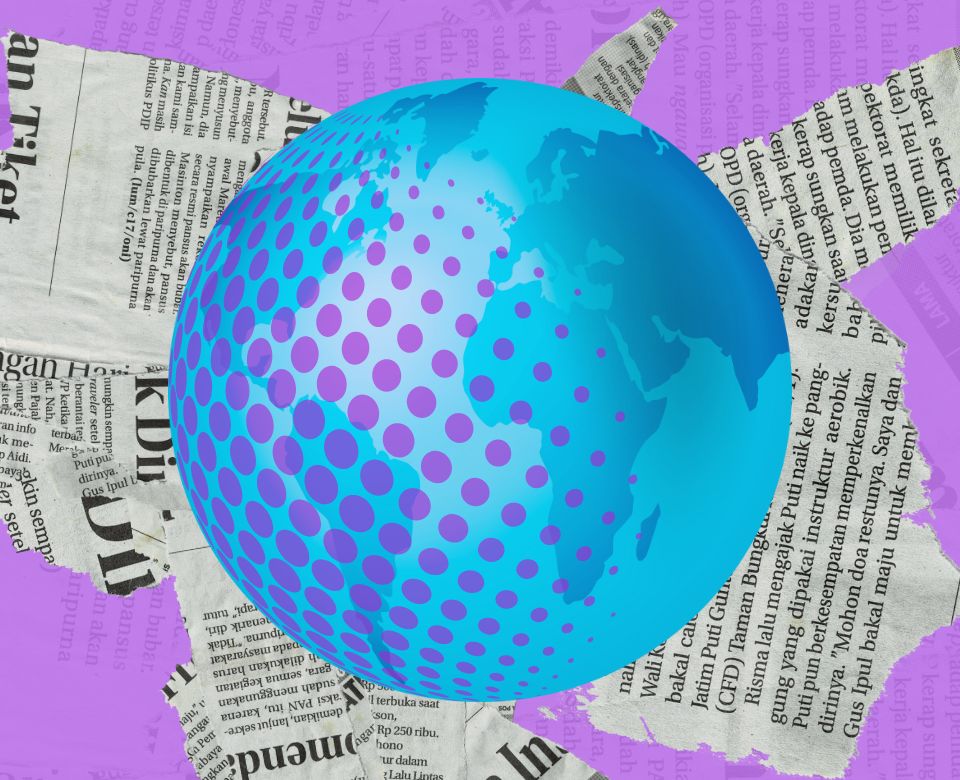
Top stories to watch for 2025: Part 2

Peter Stojanovic
The most important stories and trends in 2025 to know, for business leaders.
C-suite leaders need to understand many developing news stories and trends in order to keep up with a changeable industry. Over three parts, discover the top news stories to watch in 2025 to elevate your insights.
Top news stories to watch in 2025: Part 2
Discover 24 of the biggest news stories that cover the full spectrum of themes with which all leaders should at least familiarise themselves if they are to keep abreast of important developments facing their industries, split equally over three articles, focusing on:
- Part 1: Top news stories to watch: Today
- Part 2: Top news stories to watch: Tomorrow
- Part 3: Top news stories to watch: The Future
The ability to continually anticipate change is a hallmark of a great leader.
Through the combined efforts of intuition, data, networks and curiosity, these leaders have curated for themselves a fine-tuned, constantly evolving ecosystem of information feedback loops that they use to refine decision-making, investments, partnerships and more. It isn’t something taught per se as developed organically; a natural cohesion of intelligence gathering, communities and self-improvement.
Today, the world is becoming yet more connected and complicated. The task of anticipating change has become more necessary therefore—but more difficult.
Trends that impact the C-suite seem to come from many more corners of the globe: fiscal policy, international geo-politics and innovation have dominated Boardroom discussions since the Post-War period. Fast forward nearly a millennium(!) and executives today must concern themselves with demographic and generational shifts, the outsize role of the customer, regional and sometimes even local politics, ethical and moral dilemmas, to say nothing of advancing climate change and complexifying issues within our globalised economy, such as supply-chain resilience.
It should be noted that no single leader is expected to be able to follow the above in great detail and perform in their role to a high standard. As the best leaders discovered long ago, one’s network should be utilised to keep up to date with what one may have missed within this global overload of information.
With that in mind—and given I have the opportunity to speak with many C-suite executives across a range of sectors and regions—discover 24 stories that cover well the full spectrum of themes with which all leaders should at least familiarise themselves if they are to keep abreast of important developments facing the industry split equally over three articles, focusing on:
8 Stories to watch Tomorrow

1. Apple Vision Pro: Visionary or Vicious?
Apple’s long-awaited headset is now available. It retails at around $3499 and offers two experiences in one: a high-resolution VR headset and a suite of AR cameras that allow for users to augment computer apps within their eyeline and interact with them using hand gestures. Most enterprising is that one’s level of immersion (in the augmented reality feature) can be dialled up or down; for the first time, our lives outside and inside our computers can be physically indistinguishable.
This has serious ramifications. Early users of Apple Vision Pro are testing what happens to us psychologically when we immerse ourselves even further in the digital world, something we thought we already enjoyed, but where innovations such as AR are quickly eroding that confidence. Brands and businesses will be looking to see how consumers interact with these technologies; employers may be seeking intel on how this may improve communication in a distributed work environment, or smash the already eroding line between work and life.
2. WFH goes to UK court
In one of my Editor’s Letters last month to HotTopics subscribers I commented on a recent case that every HR leader would be closely following: the first WFH case in the UK rejected by the courts.
The details of the case are well documented online, so here I will offer that context is key for future cases. Yes, a precedent has been set, but the company in question was a regulator in a highly regulated industry; the claimant managed others and had a six-figure salary; the UK has its own set of laws and expectations when it comes to overseeing work from home cases. Still, as many executives are still grappling with a new-ish work environment, legal cases such as this offer long-awaited concrete evidence to add weight to any arguments.
3. Patterns of global trade unravel (and re-ravel)
We are often told our global trade network has shifted since the pandemic. We’re just beginning to see the extent to which that holds true. Bloomberg Business reported this week that a “momentous shift is under way as investors pull billions of dollars from China…and much of that cash is heading to India.”
The reasons for this are complex, but two major trends include the US-China trade war over successive US President tenures, and China’s sputtering economy as it struggles to regain balance after a strict Covid lockdown policy and an imploding housing sector (see: Evergrande). For India’s part, a rising population, a strengthening digital infrastructure and positive economic markets have impressed the likes of Morgan Stanley and Goldman Sachs.
On the other side of the world it has been revealed that the US bought more goods from Mexico than China in 2023 for the first time in 20 years. As a pattern of comings and goings, global trade is being redrawn beneath our feet.
4. FTC's Inquiries
The Federal Trade Commission has launched an inquiry into the partnerships between Big Tech cloud providers and generative AI companies, targeting the likes of Amazon, Microsoft and OpenAI with demands for more information about their multibillion-dollar ties.
The FTC regulates competition and said it was seeking “to build a better internal understanding” of the network of partnerships and investments that have sprung up in recent years between Google, Microsoft and Amazon, and generative AI start-ups OpenAI and Anthropic. What has irked the likes of the FTC is the opaqueness of these relationships. How FTC interprets these relationships will offer a blueprint for future relationships, whilst dampening enthusiasm for so-called silver bullet M&A deals many are predicting in the sector.
5. Scoping deep- and shallow-fake technologies
Generative AI is catalysing the creation of deep fake imagery, tech and video content, and its more crudely created sibling, shallow fakes. To draw the C-suite’s response into two categories once more—as business leaders with cultural responsibilities and as executives with responsibilities towards employees—those following this story should apply a duality to their reading.
First, deep fakes are not new, but today’s incredibly technical versions are drawing concerns from public bodies and governments fearful they are impacting the public hemisphere. Singer Taylor Swift was the recent victim of a deep fake campaign, and Slovakia's democratic process of election is one of the first (confirmed) victims of the technology. Its frontrunner lost the vote after a fake recording made the rounds online. Social media giants must do more to curb their reach; leaders should apply pressure where necessary as a show of force and solidarity with the public.
Second, -fake technologies upset the balance of truth and trust, two vital components for a functionable business and culture. Executives wanting to protect employees from scams, political or otherwise, need to get a handle on what’s out there and how it is evolving, rapidly.
6. Multi-sector partnership to solve the skills gap
One topic high on the list for executives I’m speaking with is how to build the next generation of leaders at a time of highly changeable digital technologies. Several compounding issues are present.
One, the skills and training needed to thrive in a business environment is evolving rapidly, and if the current crop of employees are struggling to keep pace because of AI’s still-to-be-decided impacts, it says nothing of today’s school and university leavers. If we are unsure of what tomorrow looks like, how can we prepare students?
By completely transforming what we teach them, says some. Higher education (in the West) remains stuck in its Victorian corset, allowing for little creativity or adaptability in the face of obvious corporate change. Universities are beholden to an economic model that favours research over teaching methods, largely, and businesses are picking talent where they can and upskilling where they need to. It is not a sustainable model.
Where optimism can be found is within the pragmatic relationships being forged between government, business and higher education. Within these fertile grounds, the seeds of new talent may emerge; it will be difficult however and leaders should watch closely as to how these will inevitably need evolving as generative AI eventually reveals its cards.
7. Electricity grid-locks
Electricity grids have been under-invested and largely forgotten over the 21st Century. The result is that our evolving infrastructure, growth in housing, commercial and industrial units, and our rapacious appetite for data, cloud service and electricity, is largely under threat. Put simply, without grids our digital future is just a dream. This developing story—with a long backstory—feels under-discussed. Leaders looking to manage expectations and maintain resilience in its networks should understand its exposure region by region.
8. Online safety vs privacy
An inconvenient truth of the internet is that a safe internet and a private internet are mutually exclusive. A safe internet protects users by using open networks, shared services with governments and police enforcement, and generally allows little scope for dark corners. Yet those are not all inherently good things: not all governments or police enforcers, for example, act in the best interest of every internet user. Private internets protect a wide range of users, using, say, encrypted messaging services, from journalists and terror cells, which can be argued is fundamental to Human Rights. The tension between online safety and privacy is one usually found between international courts, technology CEOs and governments, but as our online and offline worlds coalesce (see Apple Vision Pro section, above), we all may soon have a strong opinion either way.
Top news stories to watch in 2024
- Part 1: Top news stories to watch: Today
- Part 3: Top news stories to watch: The Future
To keep up with more of my insights, subscribe to my weekly email newsletter, Editor's Letter, now.
Follow me on LinkedIn where I am a 'Top Voice' for business, innovation, AI and C-suite insights.
SUBMIT A COMMENT
RELATED ARTICLES
Join the community
To join the HotTopics Community and gain access to our exclusive content, events and networking opportunities simply fill in the form below.